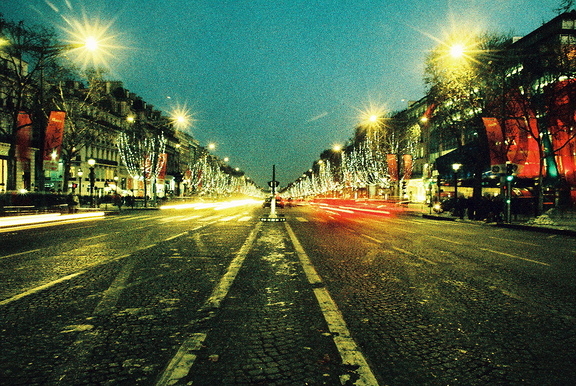|
Wait a minute, that’s my city. I seem to be saying that a lot these days. Boston in 2013, London in 2005, New York in 2001, Sydney recently, and now the most beautiful city in the world. If you have walked a city for a few weeks, you have lived there, it is yours. The horror raised memories: The first time, my wife and I, still kids, wandering on the theory of $5 a day, back in 1966, criss-crossing the river, bridge by bridge, just because. Taking our children in 1976, five of us, walking to the Louvre on a chill April day, thinking, This is as good as it gets. Our friend Roby and his grandson David driving us to our hotel, seeing the lights flash by, Paris at night. Another friend had a corner apartment in a quiet district, a walkup, just high enough to feel we were looking out on an Impressionist painting. And the most recent time, a full moon, our pal had the top down, and we circled the Eiffel Tower around midnight, just laughing at how outrageously gorgeous it is. We know the block in Boston. Our London rellies live not far from the bus line the nihilists blew up in 2005. My wife knows the coffee shop in Sydney, a stopping point in her long walks in 2000. How could one not take it personally, when a few people hate so much that they could do this kind of harm? What do they hate? What do they resent? Paris is our city, built on the arts and the sciences of the Greeks, the Romans, the Arabs, the emerging Europeans. It shimmers for all of us. The faces on the BBC and Euro News are familiar, so is the language. It’s our home, too. So far away, I could only dig out the French national cycling shirt Roby gave me, 30 years ago. He was a national cyclo-cross champion in the 40’s, and later coached French cyclists. In 1982 he drove a few journalists on the Tour. When we had a question, he would pull alongside Bernard Hinault and ask why he was making his move at this time. Roby loved his country. The first time he came to the States, he saw the Washington Monument up ahead and he started to cry. “J’adore l’Amérique,” he said. Today I put on Roby’s jersey – it’s way too tight, from too many washings, too many races – but I put it on, and I thought, “J’adore La France.” (My friend in Rio, Altenir Silva, in the Comments below, recommends this clip from "Casablanca." I would add, let us also note Angela Merkel, front and center among world leaders, on Sunday.)
Thor A. Larsen
1/10/2015 07:14:03 am
George,
George Vecsey
1/10/2015 08:22:29 am
Isn't that bizarre, two classmates from high school and our wives both going to Paris in April of 66. Lovely photo. I am sure we have a photo album somewhere, but not digitized. It was dank when we got there but warmed up by the weekend -- Marianne made a picnic lunch and we took the Metro out to the Bois de Vincennes. I recall paying 30 NF (around $6) for a room on the Left Bank. Bath extra. Great days. GV
Greg Amante
1/11/2015 03:38:59 am
George,
George Vecsey
1/11/2015 03:55:17 am
Greg: Wander past? I seem to recall a few 360-degree views of the Tour Eiffel around midnight. Inspired wandering, to be sure.
Sam Toperoff
1/11/2015 08:05:08 am
Dear George--I'll respond here if I may, and if my thoughts are scrambled, it's pure emotion talking.
George Vecsey
1/11/2015 09:24:51 am
Bien fait, mec. Je regardait par le TV. Tu as raison. GV
Ed Martin
1/12/2015 03:57:17 am
George Vecsey
1/12/2015 06:19:22 am
In the mid-60's Paris and France were still quite close to WWII. The rebuilding and upgrading hadn't really taken hold. You could connect to past decades. Still can, but that was a long time ago...
Altenir Silva
1/12/2015 10:10:50 pm
Dear George,
gouverneur
1/19/2015 10:24:47 pm
Bonjour,
bruce
11/21/2015 09:21:56 am
George, Comments are closed.
|
Categories
All
|











